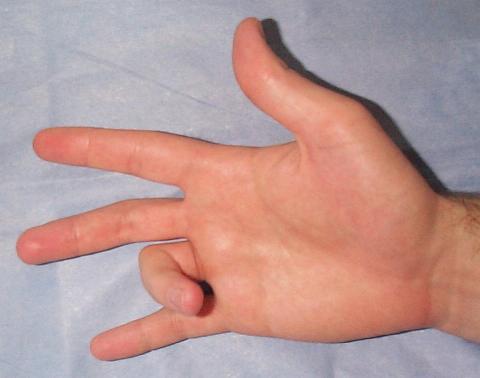nalco group
bone, muscle & joint pain physio
BOOK NOW / WHATSAPP ABOUT YOUR PAIN OR INJURY
- NOVENA 10 Sinaran Drive, Novena Medical Center #10-09, Singapore 307506
- TAMPINES 9 Tampines Grande #01-20 Singapore 528735
- SERANGOON 265 Serangoon Central Drive #04-269 Singapore 550265
Home > Blog > Hand Therapy & Customized Splinting > Conditions > Finger, Hand, Wrist, Forearm & Elbow Conditions > Trigger Finger And Hand Therapy
Trigger Finger And Hand Therapy

Trigger finger which is medically termed as ‘stenosing tenosynovitis’ is among the five causes of disability in the human hand.
Patients with trigger finger report experiencing:
- pain
- locking/jamming
- swelling
of the tendon and tendon sheathe at the base of the finger with trigger finger. Although it tends to affect adults between 40-70 years of age, there are some children under the age of 8 who are prone to it (moreso in the thumb).
clinical PRESENTATION
The most classic sign of trigger finger are a combination of or all of the following:
- locking of a finger in a flexed position (sometimes can be straightened still, or in severe cases, it becomes locked in that position)
- pain and tenderness at base of finger
- stiffness and tightness especially in morning or after prolonged rest
In some cases, there may be involvement of multiple fingers at the same time (2, 3 or more trigger finger in the same hand), especially for individuals who are more at risk such as patients with:
- who are pregnant
- diabetic
- rheumatoid arthritis
PATHOPHYSIOLOGY
For a normal flexor tendon for the finger in the hand/palm, the tendon glide inside a tendon sheath (it's like a protective tunnel blanket).
What happens is that:
- due to excess repetitive flexing
- direct damage
- other factors
the tendon sheathe starts to thicken (the tendon itself may thicken too) and that causes more friction and sometimes "jamming" of tendon-tendon sheathe. In many cases, a nodule (ball-like structure) can develop in the tendon which then will block movement.
It's this nodule that causes the finger to be locked in flexed position, and there are 4 stages of trigger finger:
- Stage 1: tenderness and pain at base of finger
- Stage 2: clicking and snapping of affected finger, able to extend without external help; with pain and swelling
- Stage 3: clicking and locking of affected finger, needs the other hand to help extend; pain, stiffness and swelling
- Stage 4: locking, unable to extend unless with lots of help/rest; pain, stiffness and swelling
Normally by stage 2-3, we recommend a direct injection to release and decrease the swelling; at Stage 4, patient almost always will get immediate relief from surgical trigger finger release.
CAUSES of trigger finger
The most common causes of trigger finger revolves around repetitive force-generating activities such as:
- house work: wringing cloth/mop repeatedly
- driving and holding tightly to steering wheel for long time
- lots of gripping activities such as pulling, climbing (including sports and weight lifting)
Of course, it can be caused or aggravated by:
- direct trauma such as blows or fall to the ground
- tendon laceration
- contributing medical conditions such as gout, diabetes, rheumatoid arthritis
- can coexist with other repetitive strain injuries such as carpal tunnel syndrome, De Quervain's tenosynovitis (mummy's/Blackberry thumb)
hand therapy management
What the hand therapist will do depends on how severe and what medical interventions has been done:
1) Conservative (non surgical)
- Splinting for trigger finger
- Protected range of motion exercises to maintain joint and tendon range, which also provides nutrition to affected tendon and tendon sheathe (in the earlier stage)
- Progressive to resistive and strengthening activities
- Ultrasound therapy for accelerated soft tissue healing
2) Post Trigger Finger Surgical Release
- Splinting for trigger finger
- Wound care and wound management to prevent joint and tendon glide stiffness, and prevent infections
- Protected range of motion exercises to maintain joint and tendon range, which also provides nutrition to affected tendon and tendon sheathe (in the earlier stage)
- Progressive to resistive and strengthening activities
- Ultrasound therapy for accelerated soft tissue healing
For more severe cases that do not respond to the above conservative management, other treatment options are:
- steroid injection (by a GP, sports physician or orthopedic surgeon)
- trigger finger release (has some risks related to surgery eg scarring, infection, etc)
